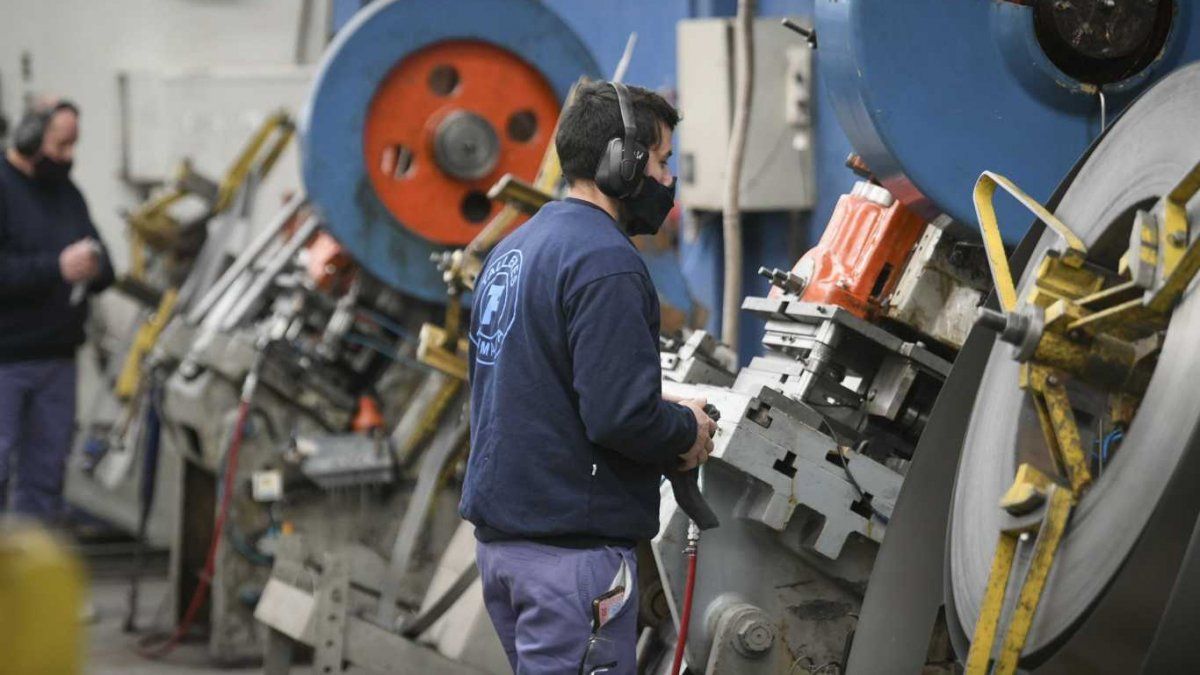According to INDEC, year-on-year improvements were reported in December in 13 of the 15 sectors that make up the EMAE, among which the increase in Hotels and restaurants (43.5%) and Transport and communications (16.9%) stood out.
“The Transport and communications sector was also one of the sectors with the greatest incidence in the interannual variation, together with the Manufacturing Industry (9.9% interannual): between the two they contributed 2.9 percentage points to the increase in the total index of the EMAE,” the agency said.
“The level of the EMAE for December 2021 ends almost 5% (4.9%) above pre-pandemic levels and the activity ended up recovering practically all of the drop in 2020, which was 9.9%. In other words, it was practically all recovery: if it had not fallen by almost 10%, it would hardly have been possible to have this recovery figure in 2021 ”, the Equilibra economist Lorenzo Sigaut Gravina explained to Ámbito.
what’s coming
According to the draft of the agreement that the Government and the IMF are working on, which was leaked days ago, GDP is expected to grow between 3.5% and 4.5% this year. In any case, from some private consultants they estimate that this number will be lower and that it could be around 3%, due to the “statistical drag”.
“Although the statistical drag left by the end of last year is high, we are talking about between 3% or 4%, I believe that the level of activity is going to be below the 3.5% estimated by the Government. We started to see it in January, when we had some impact on the offer due to the multiple cases of covid. And in February, we again had a lot of exchange and financial uncertainty, with doubts about the agreement with the IMF, and a new restriction on imports, due to the economic capacity that AFIP decides when it comes to authorizing them or not,” said Sigaut Gravina .
These restrictions, stressed the economist, “mean that dollars are scarce.” “If dollars continue to be restricted, you cannot grow. At least, in the sectors most dependent on imported inputs. It is a strong limitation, because this year we are going to have fewer agricultural exports, because the drought was harsh, and the rise in interest rates in the United States is still to come, which is going to be imminent and which is going to have a negative impact on commodities. Added to an increase in the deficit in international tourism, as restrictions on traveling abroad are lifted. And the energy deficit is also going to be higher this year”, remarked Sigaut Gravina, who explained: “With all this I want to say that there will be less agricurrency, more international tourism deficit, more energy deficit, everything makes it more difficult to increase imports to grow. If, in addition, the agreement with the IMF requires a large accumulation of reserves, the big problem is going to be the external restriction: there are not going to be enough dollars to sustain the level of activity at the end of last year. In other words, in my opinion, it will not be possible to achieve the 3% or 3.5% that the Government thinks”.
Along the same lines, from the LCG firm they maintained that “the growth of the activity in 2022 will present certain difficulties and will be conditioned by the correction of various imbalances (fiscal and tariff, for example), together with a high inflationary dynamic that erodes the salaries, harming the growth of consumption”. “On the other hand, the activity of industry and commerce will be partially subject to the availability of foreign currency that arises from the exchange balance,” they remarked from the consultancy. Thus, they concluded: “Under these conditions, we expect some slowdown in the pace of recovery in the short term and an annual growth in activity more in line with the statistical drag of 3% left by 2021.”
Meanwhile, for Martín Burgos, an economist at the Cultural Center for Cooperation, the Government’s projection can be fulfilled: “I think the rebound can continue due to several factors: good harvest prices, better wages that would result in better consumption and better employment due to greater use of industrial production capacity. The interesting thing is that, in addition to the pandemic, we have to recover what was lost in 2018/19”.
Source: Ambito
David William is a talented author who has made a name for himself in the world of writing. He is a professional author who writes on a wide range of topics, from general interest to opinion news. David is currently working as a writer at 24 hours worlds where he brings his unique perspective and in-depth research to his articles, making them both informative and engaging.




